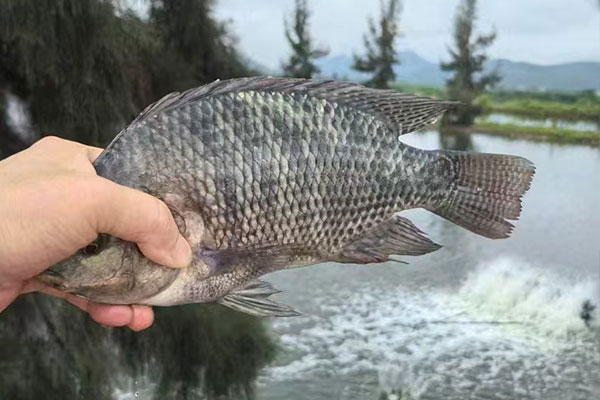Tilapia have always intrigued me with how quickly they can repopulate a pond or tank. It’s no wonder they’ve become a staple for fish farmers worldwide, especially for those of us who depend on consistent production.
- Tilapia’s reproduction cycle, or fertility rhythm, is essential to understand if you want to optimize growth and ensure a stable supply. By learning how often they breed, what triggers their spawning, and how to create the perfect environment, we can help these fish thrive — boosting yields from large commercial operations to small backyard setups.
Let’s explore the finer details of tilapia’s reproduction.
Importance of Understanding the Reproduction Cycle
Knowing their breeding habits is crucial if you’re raising tilapia for business or personal use.
A well-managed reproduction cycle helps you plan stocking rates and predict future production.
Understanding tilapia’s reproductive rhythm allows farmers to control population growth, maintain water quality, and ensure a consistent harvest. When I started, I underestimated how prolific they could be. Now, anticipating their breeding patterns helps me sidestep overcrowding and keep my fish healthy.
How Often Do Tilapia Reproduce?
Tilapia can reproduce more frequently than other fish species, sometimes every four to six weeks.
This rapid cycle depends on water temperature, feed quality, and the fish’s health.
In ideal conditions, tilapia can spawn multiple times yearly, contributing to fast population growth. If you’re an importer or farmer looking for a stable source of fish, this high fertility can be a game changer — but only if well managed.
Factors Affecting Tilapia Reproduction
Tilapia’s reproduction isn’t random; it hinges on specific triggers.
Water temperature, feeding routines, and light exposure all play a role in prompting or delaying spawning.
Controlling these factors — for instance, maintaining the proper temperature range (around 25–30°C) — can encourage or limit breeding as needed. This flexibility helps fish farmers adapt to market demands, reduce overcrowding, and maintain quality.
Environmental Considerations for Tilapia Breeding
Tilapia are hardy, but they still need stable conditions to breed optimally.
Fluctuations in temperature, pH, or oxygen levels stress them out, inhibiting reproduction.
Providing a consistent environment — warm water, balanced pH, and sufficient oxygen — fosters healthy spawning cycles. If you neglect these elements, tilapia may reproduce sporadically or produce weaker offspring, affecting both short-term yields and long-term viability.
Tilapia Breeding Techniques
Fish farmers use various methods to boost efficiency and control the reproduction process.
From selective breeding to controlled spawn systems, each approach aims to maximize the quantity and quality of fry.
Techniques include artificially bundling males and females in breeding tanks or using hormone treatments for synchronization. My favorite approach is a semi-intensive system, where instincts combine with mild monitoring, ensuring healthy fry without heavy-handed intervention.
Dive Deeper: Common Tilapia Breeding Methods
Below is a quick overview of how farmers cultivate tilapia under controlled conditions:
| Breeding Method | Description | Key Advantages |
|---|---|---|
| Natural Pond Breeding | Allows tilapia to spawn naturally | Low cost, minimal labor |
| Concrete Tanks | Easier to monitor and manage broodstock | Reduced predator risk |
| Hapas (Net Enclosures) | Uses floating net cages in ponds | Controlled environment |
| Artificial Incubation | Collects eggs for in-lab or tank hatching | Higher survival rate |
Semi-Intensive vs. Intensive Systems
- Semi-Intensive: Ponds offer a mostly natural habitat. Farmers supplement feed but rely on pond ecology for additional nourishment.
- Intensive: High-density stocking with tightly controlled feed, oxygenation, and water quality. Yields can be higher, but costs and risks also rise.
Challenges in Tilapia Reproduction
While tilapia is prolific, it’s not all smooth sailing.
Overcrowding can quickly cause stress, triggering disease outbreaks. Uncontrolled breeding may also result in stunted fish if resources become scarce.
Balancing rapid reproduction with adequate space, feed, and water quality is a perpetual juggling act for fish farmers. Failing to handle these challenges could damage a farm’s reputation, especially in international markets that demand consistent supply and high freshness standards.
Genetic Considerations in Tilapia Breeding
Selecting robust broodstock helps produce healthier, faster-growing offspring.
Genetics also affects disease resistance, growth rates, and spawning frequency.
Farmers increasingly invest in genetic selection programs, focusing on traits like faster growth, uniform size, and adaptability to varied environments. By doing so, they can deliver a more reliable product — something importers like Doucoure sincerely appreciate.
Sustainable Practices in Tilapia Reproduction
Sustainability is vital for long-term success in tilapia farming.
Eco-friendly approaches include responsible feed sourcing, minimal chemical use, and habitat preservation.
Many farms use recirculating aquaculture systems (RAS) or adopt best practices recognized by global certifications, such as BAP or ASC, ensuring safe, sustainable production. These choices protect local ecosystems while meeting the market’s rising demand for environmentally conscious products.
Importance of Monitoring Water Quality
Water quality monitoring is the backbone of successful tilapia breeding.
Checking parameters like pH, oxygen, and ammonia levels helps maintain a healthy environment where fish can thrive.
Frequent testing and timely interventions prevent sudden drops in water quality, reducing stress on the broodstock and improving spawn rates. Proper tools and routines can significantly boost fish survival — and the farm’s bottom line.
Conclusion and Future Outlook
Tilapia’s fertility cycle is fascinating and vital to understand if we want to keep production steady and fish healthy. As farming techniques advance and more global players embrace sustainable standards, tilapia will remain a cornerstone of aquaculture. Here at Yanghuafishery, we’re excited to see new technologies and best practices emerging, helping everyone — from local farmers to international wholesalers — deliver top-quality tilapia for years.




